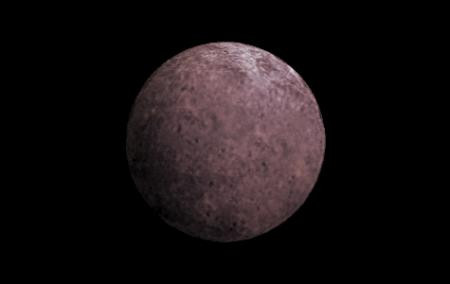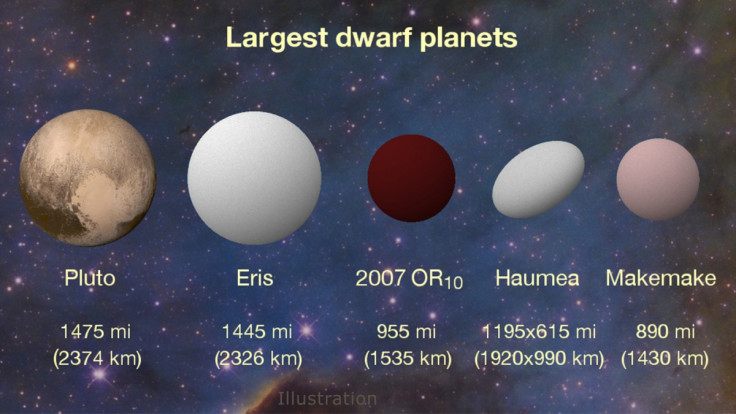2007 OR10: Unnamed dwarf planet at far reaches of solar system is much bigger than thought
A dwarf planet at the far reaches of the solar system has become the biggest unnamed object orbiting our Sun. Revised measurements of 2007 OR10 revealed it has a diameter of 955 miles (1,535km) – 155 miles (250km) bigger than previous estimates. This makes it the third biggest dwarf planet in the solar system – and the largest without a name.
2007 OR10 was discovered almost a decade ago. It is the third farthest object in the solar system, with only Eris and V774104 exceeding it. Because these objects are so distant, small and cold, they are very difficult to observe, meaning details about their basic properties, like their size, are not well known.
To better understand 2007 OR10, an international team of scientists combined data from Nasa's Kepler space telescope and the ESA's Herschel Space Observatory. Using Kepler, researchers were able to ascertain 2007 OR10 has a very slow rotation, taking almost 45 hours to spin.
Understanding the dwarf planet's rotation period meant researchers could build better models of it. They combined data on the fraction of sunlight reflected from Kepler and how much sunlight was absorbed and radiated back with Herschel.

Taken together, the team was able to make a more accurate measurement of the dwarf planet's size. The results, published in The Astronomical Journal, showed it had a diameter of 955 miles – much larger than the previous estimate of 795 miles. This also makes it 60 miles (in diameter) larger than the next biggest dwarf planet, Makemake.
The larger size also means 2007 OR10 probably has a very dark surface (unlike most dwarf planets) because of how much light is reflected. Research leader András Pál, from the Konkoly Observatory in Budapest, said: "Our revised larger size for 2007 OR10 makes it increasingly likely the planet is covered in volatile ices of methane, carbon monoxide and nitrogen, which would be easily lost to space by a smaller object. It's thrilling to tease out details like this about a distant, new world – especially since it has such an exceptionally dark and reddish surface for its size."

The task of finally giving 2007 OR10 a name is now under way. This decision will be left to astronomers Meg Schwamb, Mike Brown and David Rabinowitz who discovered the dwarf planet. But at the moment, they are still deliberating.
Schwamb said: "The names of Pluto-sized bodies each tell a story about the characteristics of their respective objects. In the past, we haven't known enough about 2007 OR10 to give it a name that would do it justice. I think we're coming to a point where we can give 2007 OR10 its rightful name."
© Copyright IBTimes 2025. All rights reserved.






















